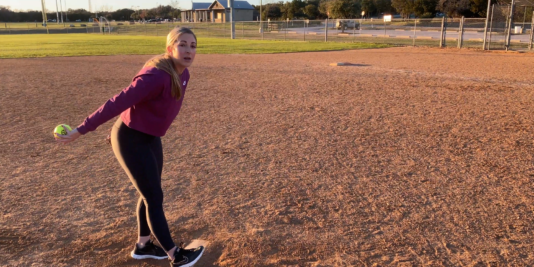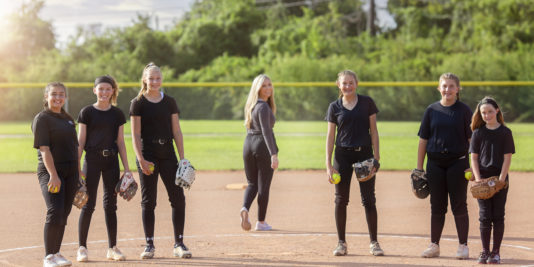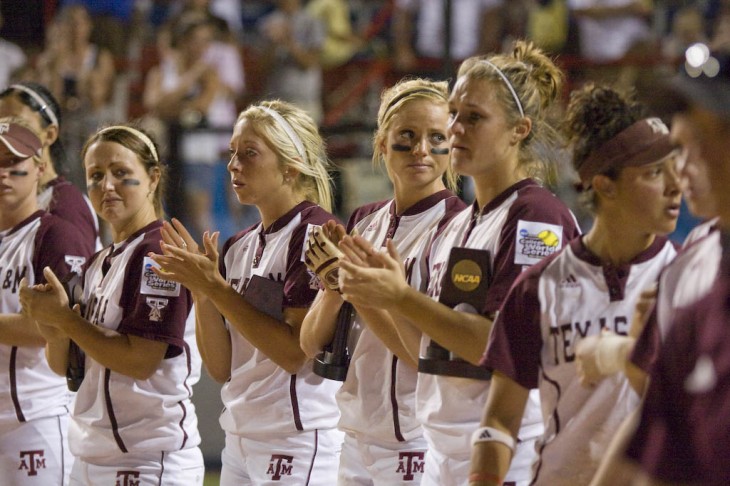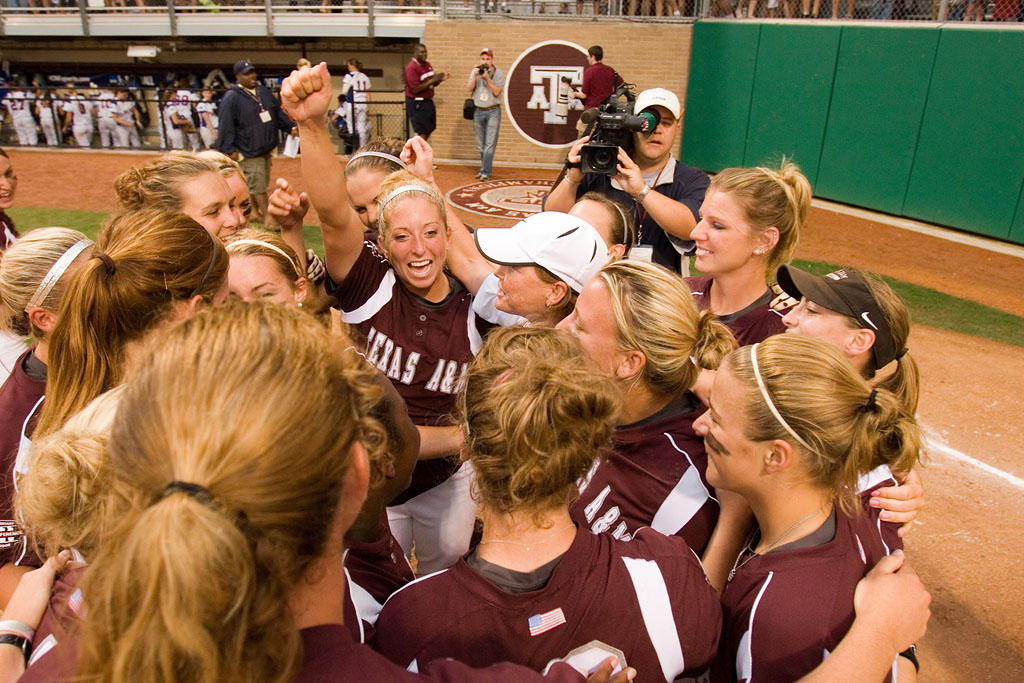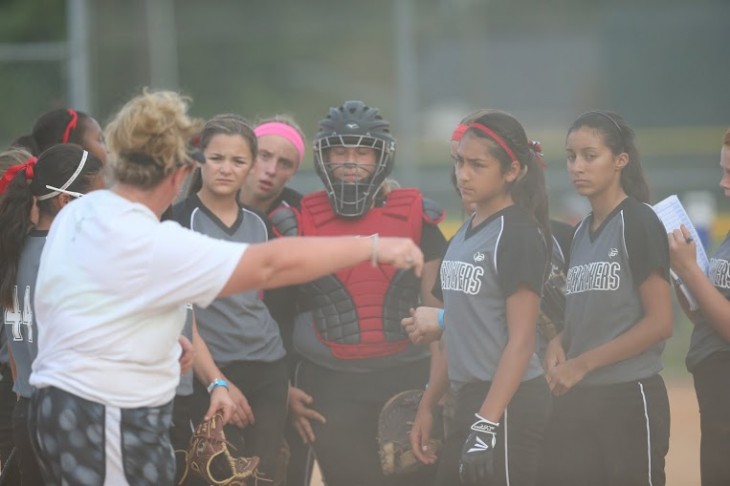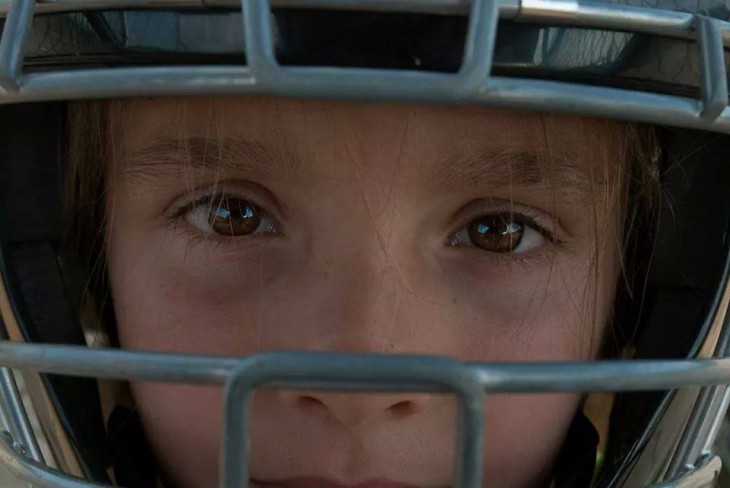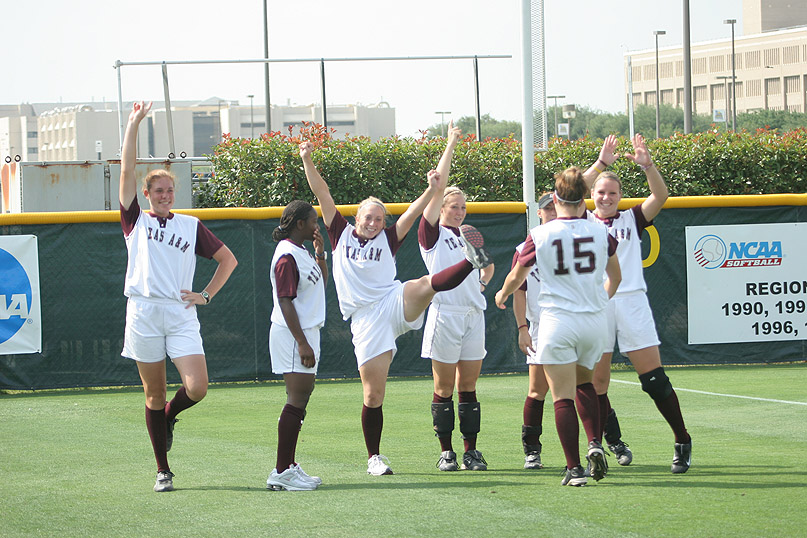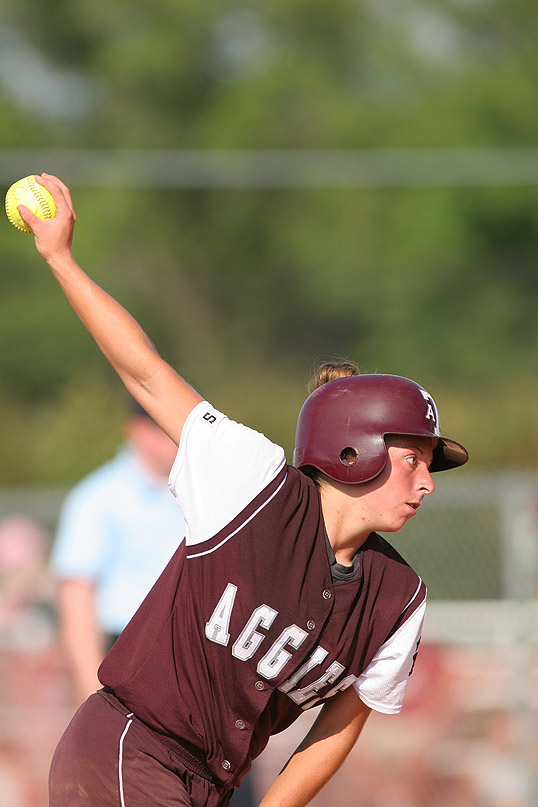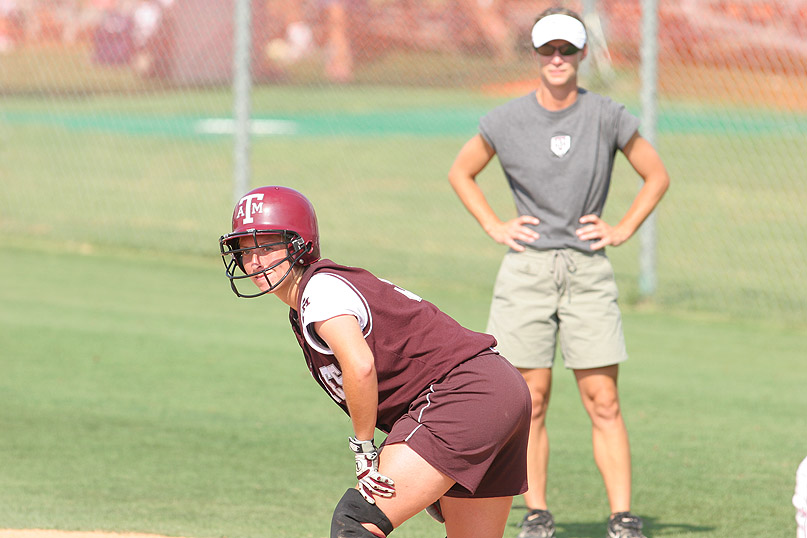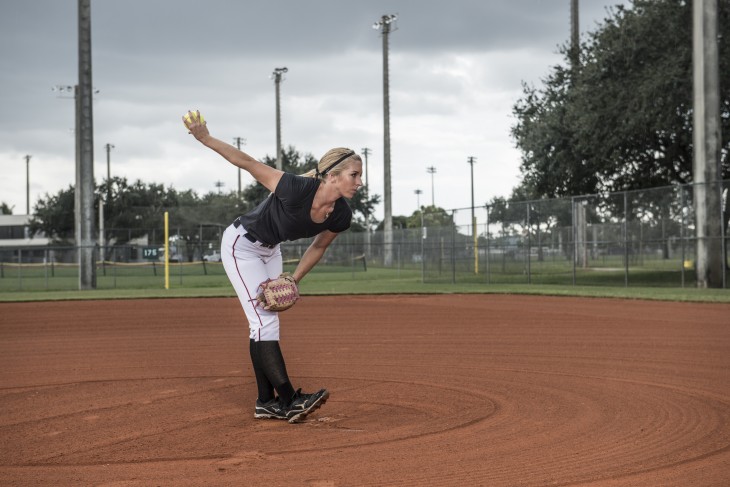What does it take to be pitcher?
My dad volunteered to pitch me when I was 8 years old because our team moved up an age group from coach pitch. I was the chosen one based off of willingness to try it out, and of course, if my dad thought it was a good idea, then, sure, put me in! At that time, I called myself a pitcher. NOW…I wouldn’t have been so quick to pull the trigger on that title knowing the true characteristics of what it takes to label yourself a Pitcher when you’re out there competing. At that time, I was filling a void on the field. I was playing a part like an actress in a play. What I later learned is that being someone who throws pitches to a catcher in an inning or two is different than being a Pitcher.
When I do clinics around the country with The Packaged Deal, the highest number of participants who want to pitch are probably between the ages of 8-12. At this age, the young girls are either trying it out or trying to fill a void on the team. They’re a little naïve, and it seems fun – to be the one who gets to hold the ball every play and be the one with the most physical action on the field. If you are a young player, or young parent getting involved in the sport, the first thing you pay attention to is the physical attributes that make a pitcher and you give most of your attention to the mechanical positioning of the pitch. What takes years to learn/experience and what you can’t see, is all that goes into being a pitcher internally.
The more you are around the sport and the older you get, the quicker you learn being a pitcher is not as glamorous as you once thought it was.
Eventually, either because of unwillingness to practice or lack of confidence, a high percentage get weeded out. I’m sure you’ve seen it – when you were younger you had 6-8 “pitchers” on your team, and then when you get older, you have 3-4 pitchers on your team.
Why does that happen? Because you learn that pitching isn’t just something you do, you learn that it’s a way of life and thought. Most people don’t quit because of lack of physical attributes…but because of what it takes on the inside. They are lacking the DNA of a pitcher or they are lacking the patience to develop the DNA of a pitcher.
There are 4 different categories you can be placed into along the journey….
- The Naturals– They’re born with “it.” What this feels like, I don’t know, because I definitely did not fall under this category. This person is born with the physical mentality to be a leader and the confidence to go out and beat anyone at anything they do. They are also born with some amazing athletic traits and can be considered naturally gifted.
- The Renovators – These are pitchers who are not born with “it”, but given all the tools along the way to apply their knowledge and put it together. They get better with their tools the more experience they get.
- The Static Ones – I think of a mouse running on one of those spinning wheels. They keep trying and trying. The Mice either aren’t given the correct tools, or are given the correct tools and can’t quite use the tools to put all the pieces together. Sometimes this is a pitcher who doesn’t have big goals as a Pitcher and they lack motivation to put it all together. Sometimes this is a pitcher who keeps trying and trying, but she fights herself so much without trusting, that the tools she knows become inapplicable. This is a pitcher who is not moving forward with her growth for one reason or another.
- The Transfers – This is that majority who decide to pass on pitching early on. They likely enjoy another position more or they don’t want to spend the mental and physical energy towards pitching. They transfer out of pitching and focus on a different position or maybe even transfer to another sport.
Pitcher DNA Ingredients.
Your pitcher may have some of these, she may have even been born with some of them. Others may be working on all of them or working on some of them. In the end, to be a great pitcher, you have to eventually show that you can perform all of them. Those who are performing all of them on a consistent basis are the ones whose names you hear about on TV or read about in the newspapers. They are the ones somewhere along the way advanced from one of the “supporting actresses” to lead role on Broadway. Thing is – not everyone WANTS that lead role. Some people are ok with always being the supporting actress.
Ingredients when you are cooking all have to be put in the put together in order to make the best tasting dish. If you leave one out, you can still have a dish that might taste ok….but it won’t taste the same as when 100% of them are put in.
#1 – Pays Attention to Detail – To me, this all starts at practice. Pitching is one million small details all mixed together: how often to practice, what to practice on, what you are getting better at, what you need to work on, working on small little mechanics to build a strong foundation, pinpoint detail in hitting location. Think about how many pitches you will throw in a life. If a pitcher does not learn to pay attention to small details, then she will not learn along the way to be very successful. Paying attention to small details about mechanics and how to make small adjustments IS pitching. Learn to do this and you are setting yourself up for success along the way. If you do not have the patience for this, you most likely will hit a point where you are not getting better and other people around you will start to pass you up.
A Pitcher understands that all the small things add up to big things, and gives upmost respect and attention to small details every step of the way.
Pay attention to little things throughout the day – take care of your uniform (no wrinkles), tuck in your shirt, hustle every single step instead of cutting it short, run out to your position, do every single rep (even when they may seem meaningless). Train yourself to start paying attention to details OUTSIDE of actual pitching and INSIDE of your bullpens. You will be amazed at how paying attention to small little details will change your game.
#2- Pursuit of Perfection mixed with Understanding Perfection is Unattainable – The biggest pro and con of every pitcher, no matter what age, is they want to be perfect. That pursuit of perfection should motivate a pitcher, but it should not paralyze her. In life, even outside of pitching, there needs to be a constant reminder that it’s ok to not be perfect. That reinforcement will play as a balancing act. Think of it this way- a pitcher might throw 100 pitches in practice with her dad. In an average practice, MAYBE 10 of them she will consider “perfect.” (Maybe you as a parent will consider more, but the pitcher is always going to be harder on herself). That means at that practice, 90 times she was not “perfect.” And not only was she not perfect, but she may have thrown those 90 imperfect pitches in front of her DAD, who she wants to be perfect for. Double whammy. So really it’s a lose-lose situation. We need to practice so we can try to be perfect, but we won’t ever be perfect. So we are just going to keep practicing, striving for perfection which will always be unattainable. A parent’s job is to combat this necessary evil. In just one practice a pitcher can get really down on herself, and then the practice becomes unproductive. If and when a pitcher can learn it’s ok to not be perfect, and move on to the next pitch to give that next pitch it’s best shot at being perfect, that’s when she starts to feel what it’s like to take that leading role.
#3 – Positive Self Talk – The thoughts inside of a pitcher’s head are more threatening than any physical attribute about her. More times than not when a pitcher is not having success in a game, I can almost guarantee it’s because before a pitch she is thinking, “Please don’t hit this”, “Please let this be a strike”, “Don’t throw a ball.” That kind of self-talk is exhausting and feels lonely. With that kind of talk, you are beaten before you even throw the pitch. Practice working on positive pitch thoughts in practice and lessons. Or instead of blank thoughts, turn them into positive thoughts. Maybe it takes having a moment by yourself where you “buy into” yourself. A lot of times it’s not a coach or a parent who can talk you into this. It has to be YOU. Maybe you’re in your backyard playing or in your room before going to sleep and you make the CONSCIOUS decision to have positive self-talk. Will it be there every day? Nope. I hate to tell you this, but no, you won’t feel it EVERY DAY. You have to work on it. But the more you train it, the more it becomes a habit, just like the physical mechanics of pitching. Like muscle memory – train your brain. It helps if you train your brain to do it in things outside of pitching. Even walking down the hall at school, thinking positive about what people might be saying about you, keeping your chin high and not letting negativity creep in. Start thinking consistent positive thoughts and you will be amazed at how you will FEEL and the results that it will lead to.
#4 – Strong Focus – You have to be locked in and focused before anyone else on your team is. It all starts in the bullpen before the game. Have a soft focus of staying relaxed yet warming up and getting your mind focused on the task at hand. A strong focus once you get into the game will deal with pitch calling – remembering where you are in the lineup, remembering what the hitter did the last AB, thinking about what the count is, thinking about what you pitched the last time, looking at where she is in the box. You will have 100+ pitches in a game – that is 100+ times in a game will you have to focus intently on exactly what you are doing. Being a Pitcher, your mind is NOT on autopilot. You have to manually put yourself into gear every pitch you throw. When your team is hitting, you are thinking about who is coming up to bat the next inning. You are focused while other people on your team may be messing around in the dugout. Your strong focus takes over where you never lose sight of the task at hand. If you are not up for this kind of set focus on the games, pitching is not meant for you. Never just go through the motions. If your body is pitching, it is learning and you should be focused on making your craft better whenever you set the intention and set aside the time to practice. Train your mind to be focused in on the task at hand whenever you are in the circle.
#5 – Determination/Resilience/Response – These three ingredients go hand in hand with each other. Anything that is worth anything in life is going to have its down moments, even moments where you may want to quit. The best Pitchers you hear about on TV or in the paper, you read their names and see all the glory next it, but it fails to mention the times those players who are even considered “the best” wanted to quit. I am going to tell you right now there are going to be multiple times as a pitcher you want to give up, but if you love it, you will keep coming back to it. There are going to be times you are injured…almost everyone will get injured as one point or another – it’s just a part of sports. Don’t feel sorry for yourself – find a way to get better and get healthy. The resilient ones will work hard to get back to the form they were in pre-injury. If you’re THAT determined and THAT resilient, you will see it in a game where you don’t have your best stuff. Not every day you are going to FEEL your best as a pitcher, but if you are determined to find a way to go out and compete and give it your all, that’s all anyone would ever ask. When you come upon adversity (we ALL will) go at it full force! Whether it be inside a game where you are getting hit really hard or you come upon an injury, always remember it is NOT that moment that defines you – it is how you RESPOND. Your response defines you as a pitcher, as a leader, and it defines your character. Be resilient. You are so much stronger than you think. If you love to do something…if you truly LOVE to do it, even through the toughest moments. If you feel it in your heart, DO IT.
#6 – A) Will to WIN – You better believe that determination and resilience tie in with a will to win. I am not talking about those players who just sit there and say, “Yeah, I want to win.”
I am talking about those players who will do ANYTHING it takes to win every single pitch. You see them fighting. Why? Because they have a reason to fight. That reason? Simple. To win.
To be a successful pitcher, you HAVE to want to WIN. If you don’t have that internal drive to will your body to win, then you don’t have much chance of being a successful pitcher at a high level. A team plays harder behind a pitcher who possesses the will to WIN. If you don’t want to WIN, then you are probably just playing for a hobby. It goes back to the difference between someone who is just filling the role of throwing pitches to a catcher versus a pitcher who is throwing pitches to a catcher with the intent figure out a way to WIN. Those pitchers with the will to win you see their name more often. Their team fights harder behind them because the team knows every single pitch that pitcher is fighting for them. It works both ways. You either want to win, or you are just out there going through the motions just to get the game over with. Compete with yourself at practice, compete against your coach, and compete with your teammates. Compete in healthy ways, but train yourself and your mind that you want to compete to be the best. Nothing will be given to you – not an out, not an inning, not a starting spot. You HAVE to have the will to win and the will to compete if you want to be successful.
B) Know How To Win– Ok, so you WANT to win, but do you know how to win? There is a difference. First, you have to have the will. Then, you have to know what it takes to win – the way it feels to give your all every single pitch and come away with the W. Some pitchers may be great for the first 2 innings, but then maybe they lose their focus or the other team catches on to them, and they lose the game in the last 1-2 innings. Being good for the first couple of innings doesn’t count as a W.
You have to know how to win a complete game.
A complete game may feel like a marathon, but a Pitcher will be able to figure out how to beat an opposing team for an entire game, not just a few innings. First, you have to have the physical endurance – it will help with hitting consistent locations to last an entire game. You also have to be able to mix speeds to last an entire time- can’t just throw one. And finally, you have to be able to work BOTH sides of the plate – you can’t just live on one (it makes it too easy for a hitter to adjust to). When you have experiences to draw on where you mixed together the WILL to win and figuring out HOW to win, then you can go up against almost anybody and know you have a chance.
#7 – Want the Ball – Finally, the greatest pitchers I have ever witnessed want the ball. What does that mean? It means when the coach asks who wants to pitch the championship game, that player has her hand out waiting for the game ball to be put into it. The average pitcher won’t feel this. It takes courage and guts to be the one who puts her hand out. The average player doesn’t want the ball because they are scared to make a mistake and are scared to lose. In this game, you can’t pitch scared to lose. You can’t pitch scared to make a mistake. Every inning, every game, you have to be the one who wants the ball. You have to know what wanting the ball entails.
Wanting the ball does NOT mean you are going to be perfect.
If you put those two hand in hand, you are greatly wrong. Wanting the ball means you are going to give your all on every single pitch. It means you are committing to be locked in. It means you have a belief in yourself that you are going to be able to make adjustments when necessary. Wanting the ball means even if something does not go your way, you aren’t going to give in. And wanting the ball means you are determined and resilient with a passion to do what it takes to win. A pitcher who wants the ball may even call a meeting with her coach and be brave enough to say, “I want a chance to pitch in the championship game” or “I want a chance to pitch in the bracket game.” She doesn’t want this because her PARENTS want it, she wants it because it’s a feeling inside of her that she knows she can do it and succeed. It says a lot about a pitcher who will meet with her coach and say aloud that she wants to be The One in the circle.
Always remember that you may have all these qualities as a pitcher, yet some days that means you last in a 11-10 game, and your team still wins. Some days that means that you fall on the other end of an 11-10 game. Other days you may win the 1-0 game. No two games are going to be exactly alike, but you can always strive to show the above ingredients and build the confidence inside of yourself to be the Pitcher who wants the ball. The biggest thing I know is that #1-6 do not matter if you don’t have #7.

